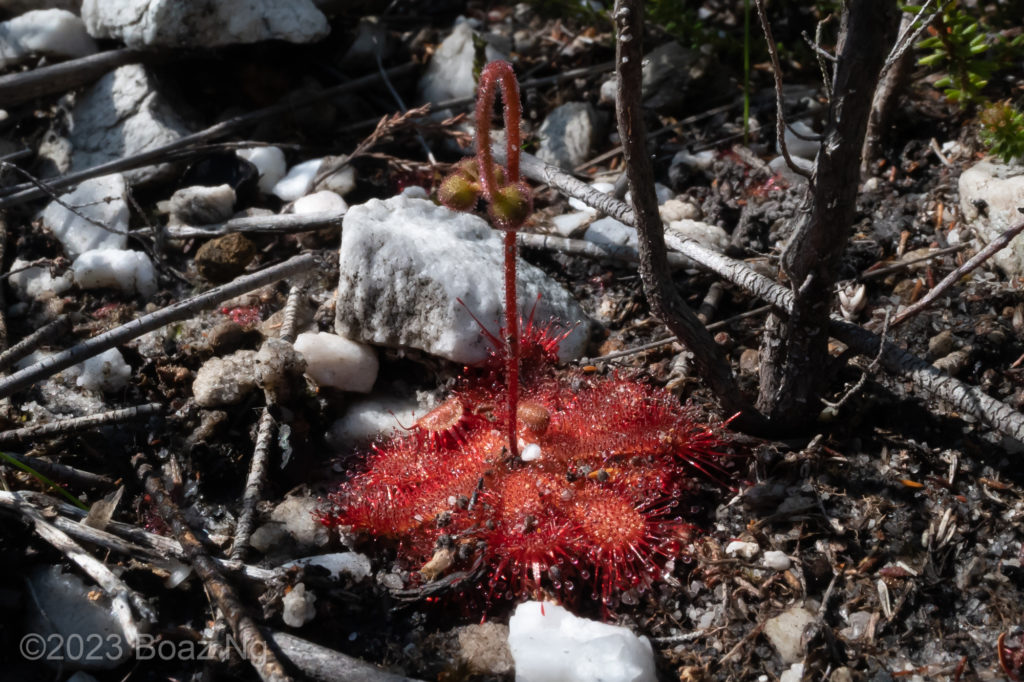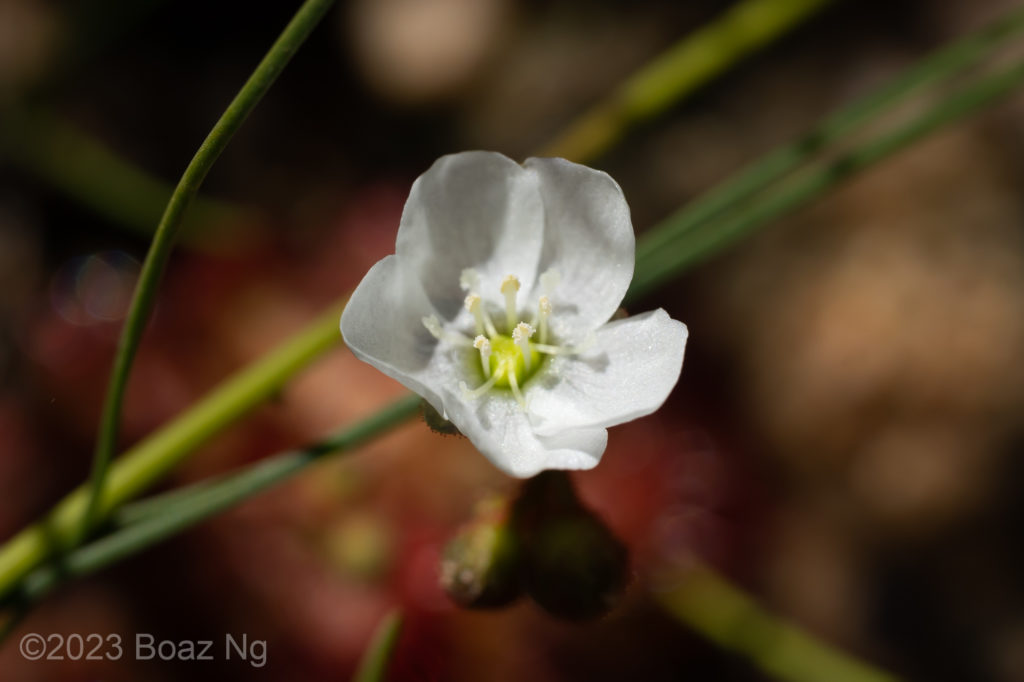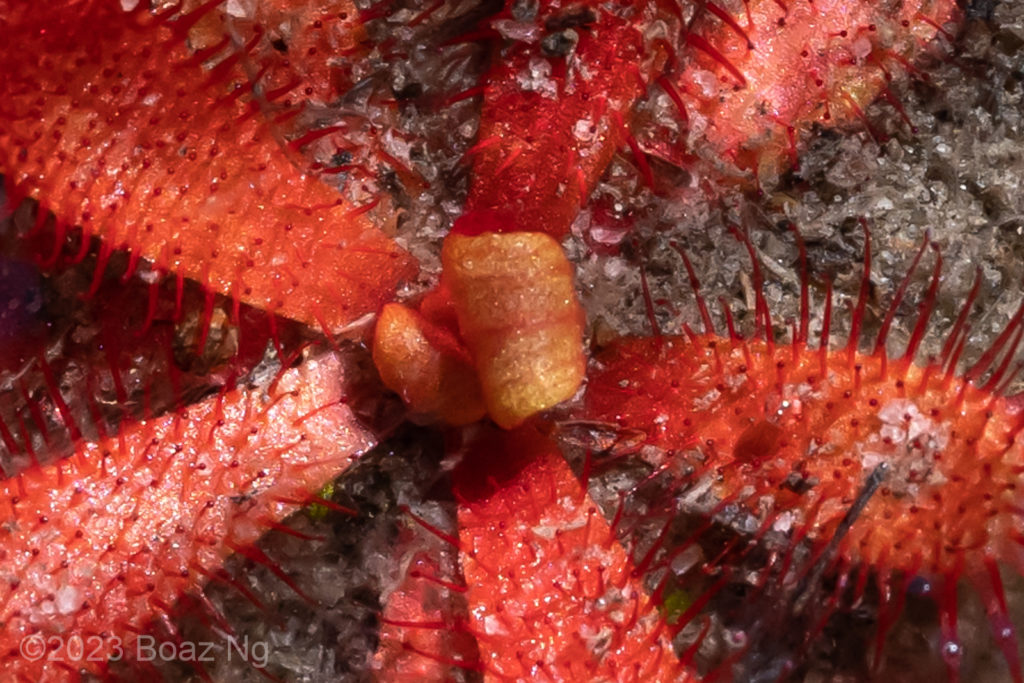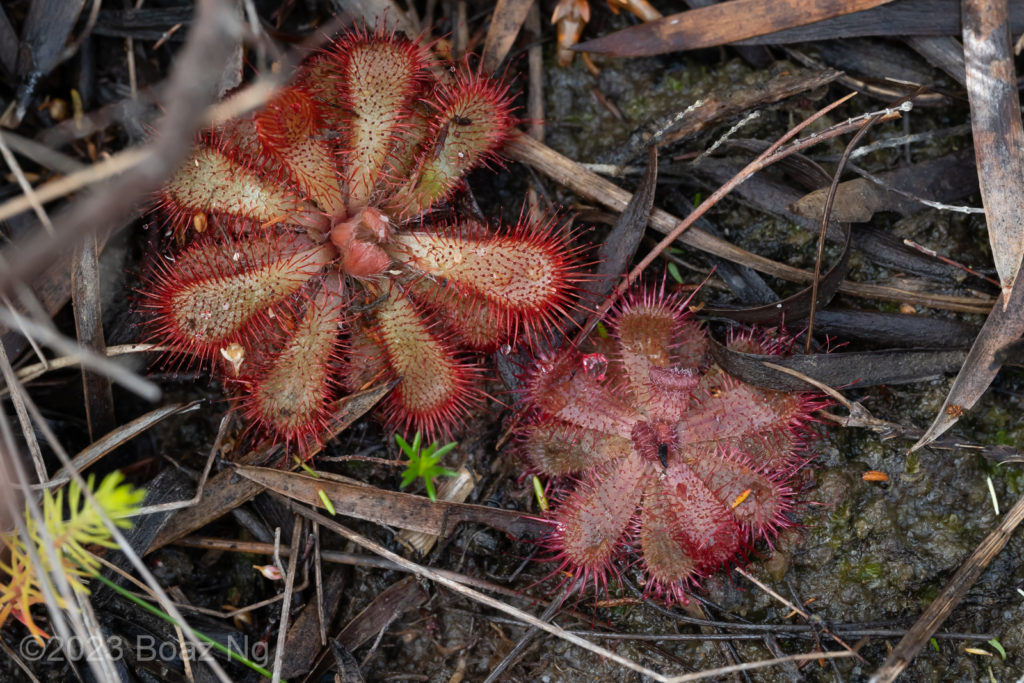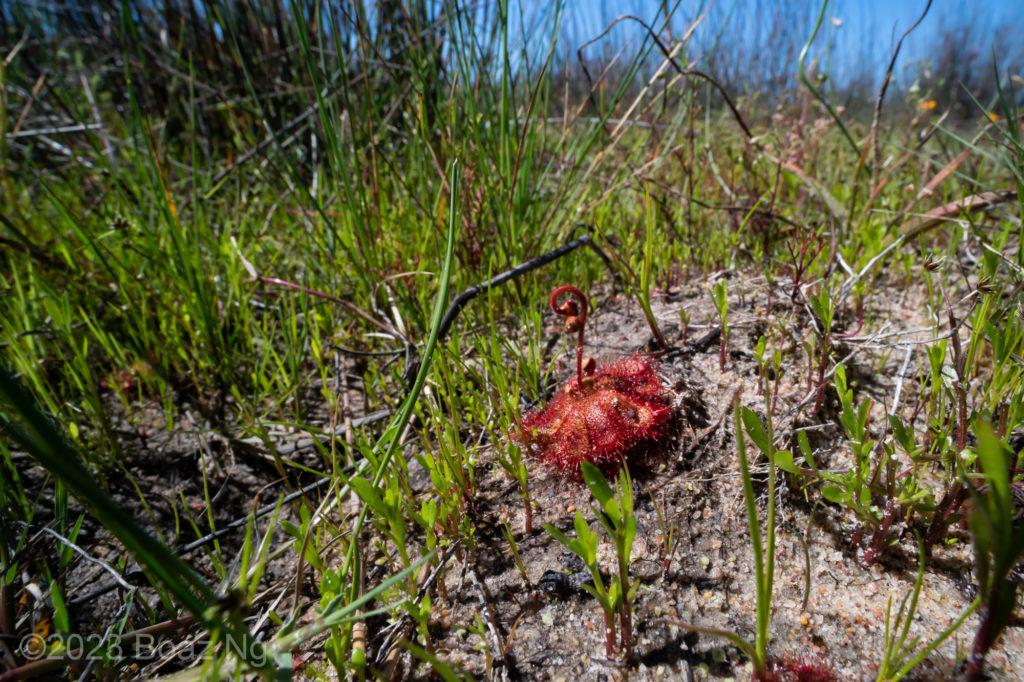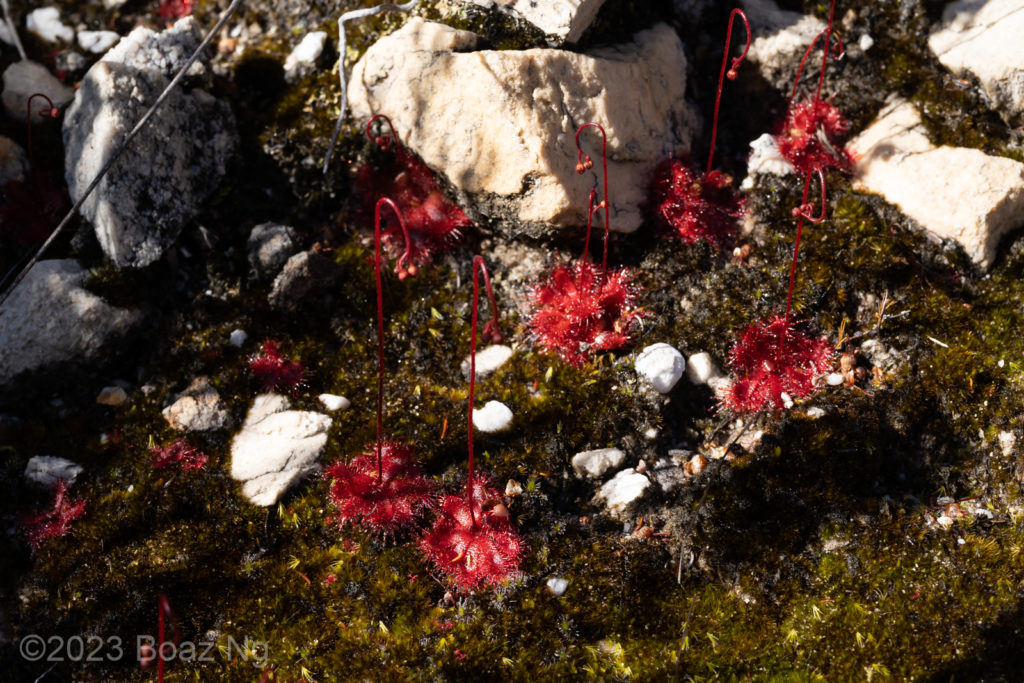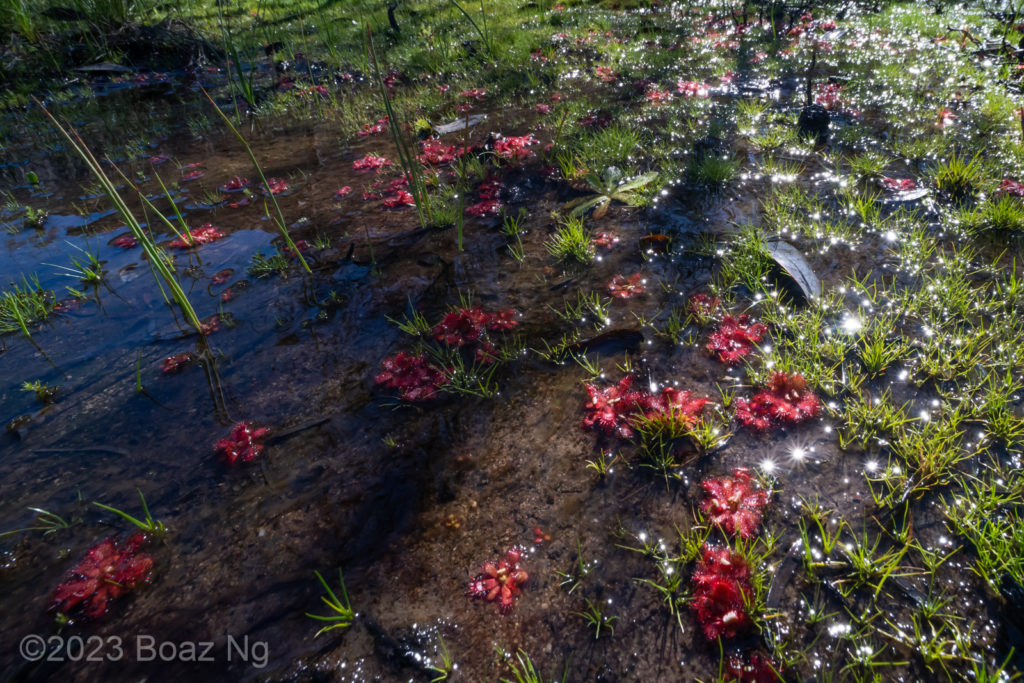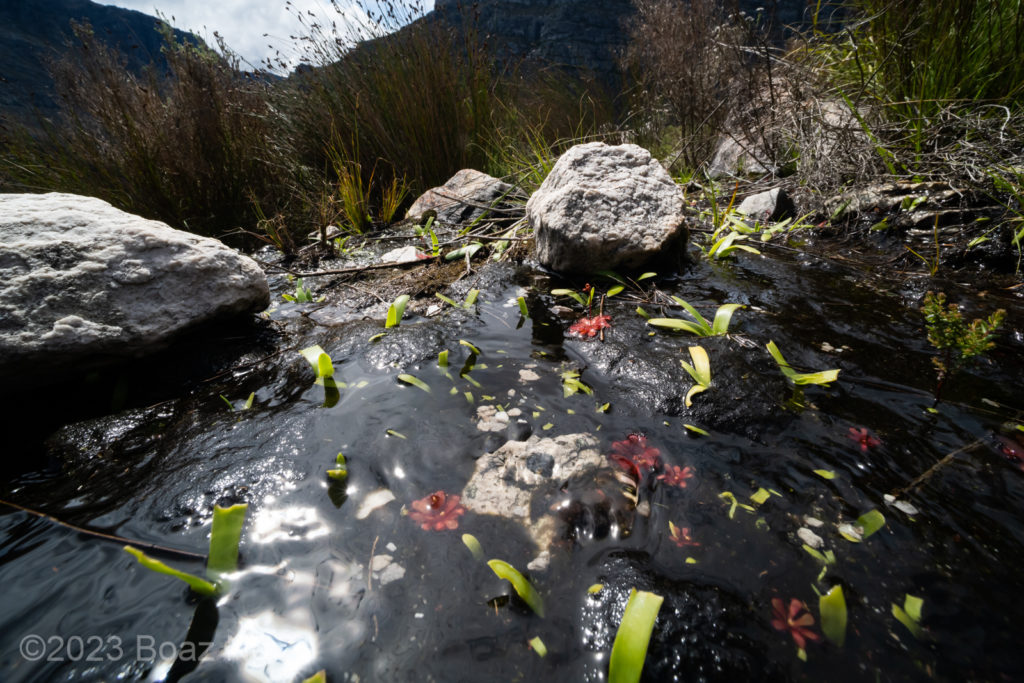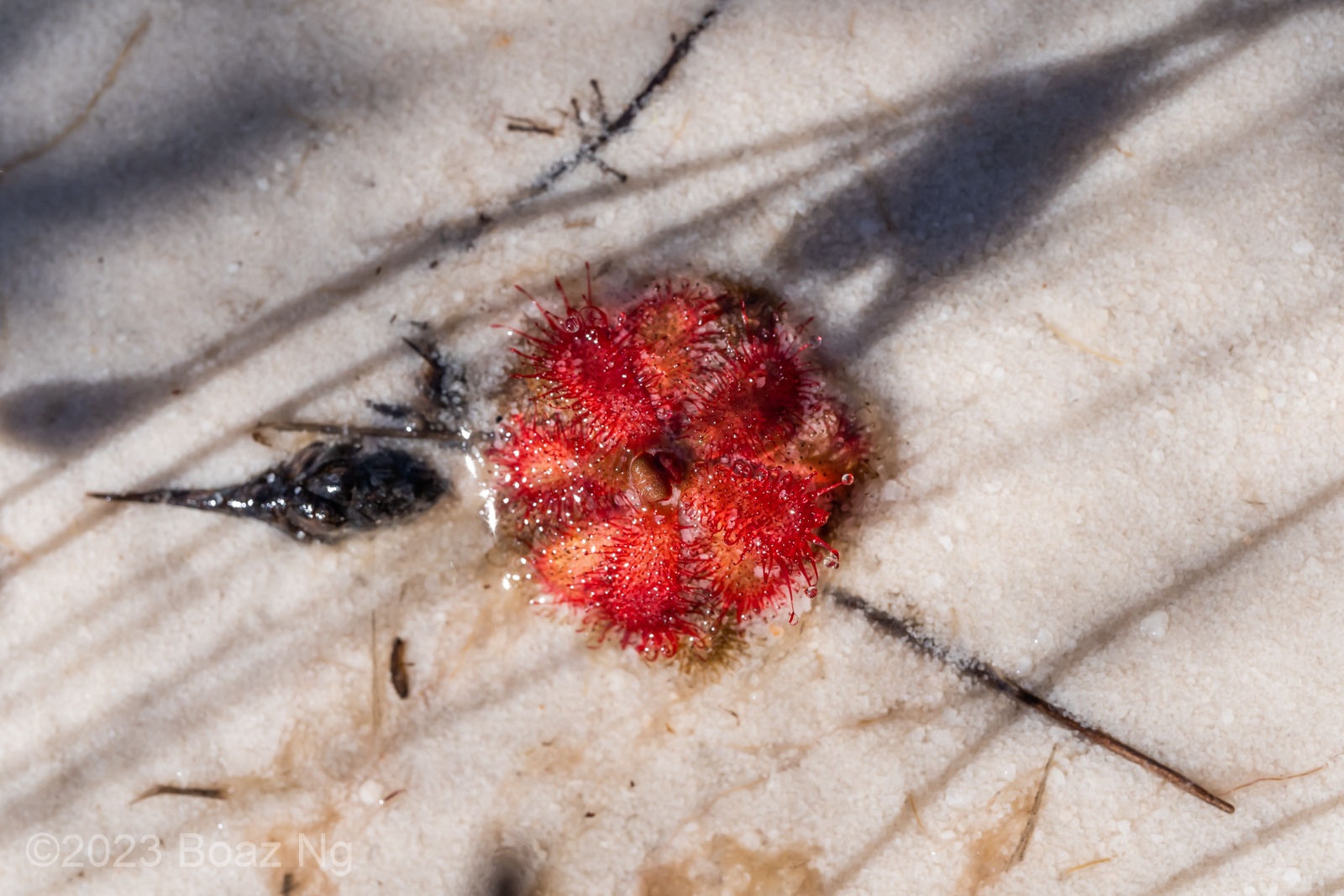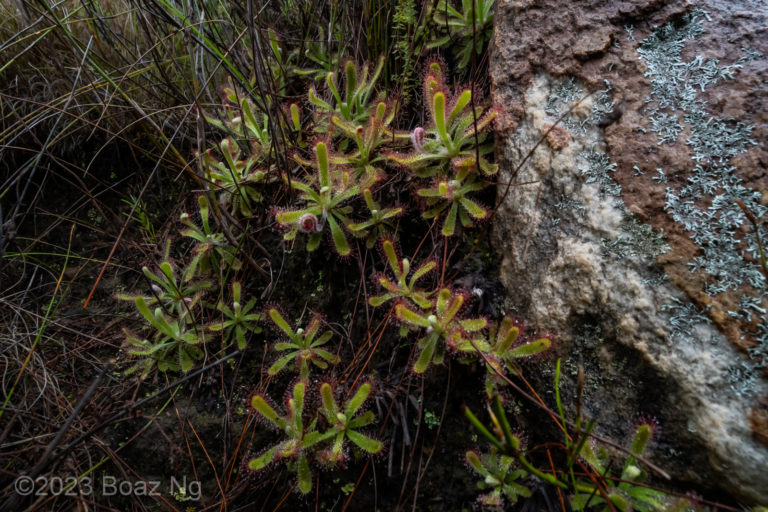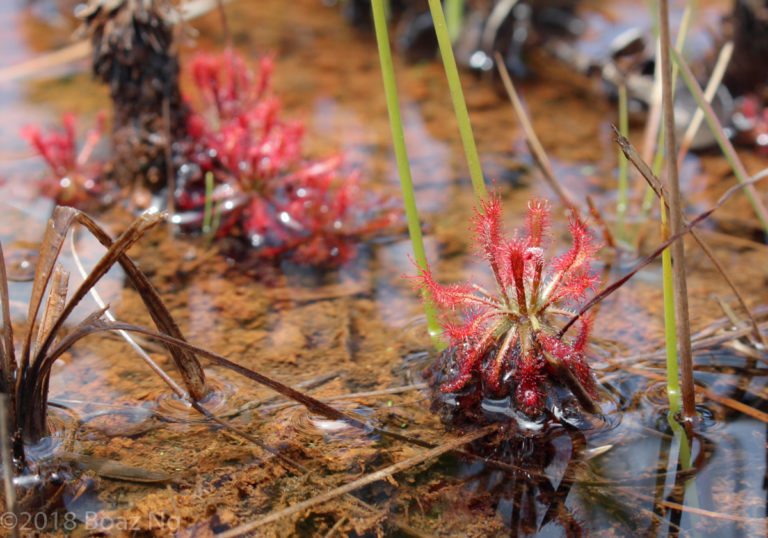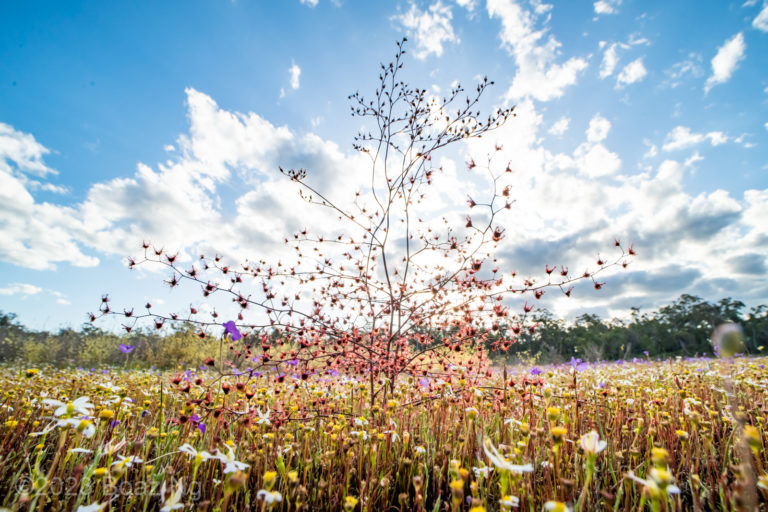Drosera trinervia is a rosetted sundew native to South Africa. Its name references the three prominent nerves that run the length of its leaves.
Drosera trinervia has small rosettes that reach around 2-3 cm in diameter. The leaves are strappy and covered with tentacles along the entire surface. Both the leaves and the flower stalks are covered with small glands. The flowers are small and usually white. Three veins run the length of the leaves, but may be obscured on the upper surface by the glands. The plants are usually vivid red in colour but ay be greenish in sheltered positions.
The species grows in winter wet areas of South Africa, mainly within the Western and Northern Cape regions. It is a generalist that colonises a range of seasonally moist niches such as seepages, soaks and moist fields. The plants are winter-growing and enter a loose summer dormancy as the weather warms up. Flowering occurs in spring.
Drosera trinervia superficially resembles a few rosetted sundews that are often found in overlapping niches. It is distinguished from D. aliciae by the lack of obvious stipules (D. aliciae has obvious stipules at the base of the leaves). It is distinguished from D. afra by its smaller size and (usually) white flowers (D. afra is larger and has pink flowers).
